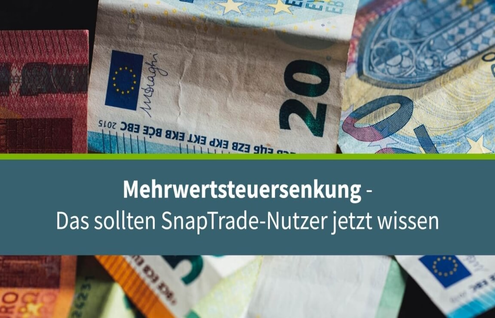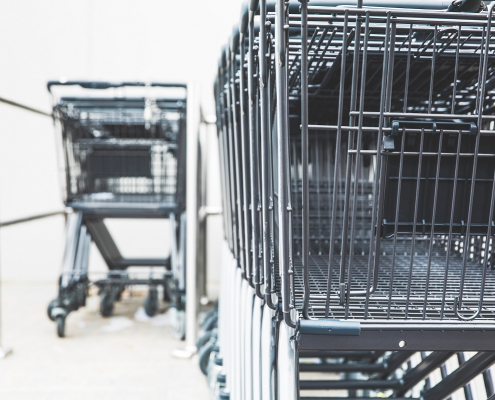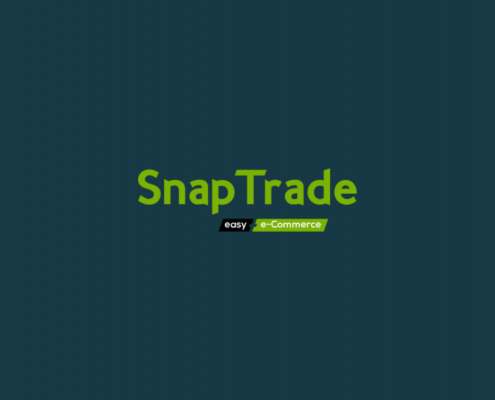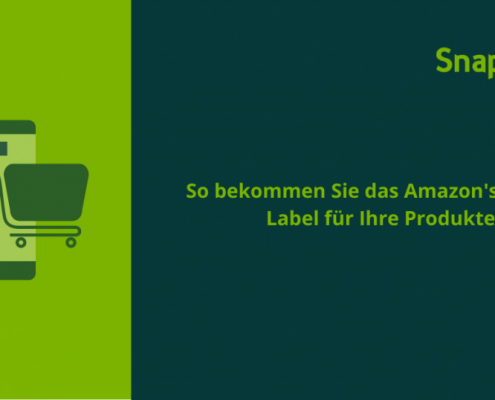What One-Stop-Shop (OSS) means for online retailers

It hardly appears in the current reporting, but it has long been a done deal: The one-stop-shop sales tax reform, which will come into effect from July 1st, 2021. In this blog post, we clarify exactly what this is all about and what online retailers will have to be prepared for in the future.
In short: What is the sales tax reform one-stop shop?
One-Stop-Shop (OSS) is one of the largest, if not the largest, reform of European tax law for online retailers and is passed as part of the E-Commerce VAT Package of 2017. One-Stop-Shop is to act as a central platform for VAT compliance. When it comes into force on July 1, 2021, the law will apply in all EU member states. This affects online retailers who register for the special regulation and have internationalized their business. Specifically, the Federal Central Tax Office (BZSt) says:
“The procedure is aimed at entrepreneurs who are based in Germany and for a fee
- Provide services to individuals in Member States of the European Union where they are not resident or
- make intra-Community distance sales of goods or
- provide an electronic interface by using which they support the supply of goods within a Member State by a non-resident taxable person and are therefore treated as if they had supplied the goods themselves.”
So much for the general information. In the following, we explain exactly how OSS works and what the advantages and disadvantages are for online retailers.
Status quo: delivery thresholds
Before we explain how the one-stop shop works in detail, it makes sense to take a look at the current sales tax law.
This provides for so-called delivery thresholds. It is thanks to them that online retailers do not have to register with the responsible tax office of the country of destination (the country where the buyer of the goods is based) from the first euro of sales through distance selling. In fact, this is only necessary if a delivery threshold of 35,000 euros per calendar year is exceeded.
A delivery threshold of 100,000 euros applies to three states. These are:
- Germany
- Luxembourg
- Netherlands
If the respective limit is exceeded, a report must be made to the local tax office. From now on, the sales tax will be paid in the country of destination, and the local sales tax rate must be applied (this varies between 17 and 27 percent within the EU).
What will change with one-stop shop in terms of delivery thresholds?
With One-Stop-Shop, the delivery thresholds are not abolished, but noticeably lowered. From July 1, 2021, a uniform threshold of 10,000 euros will apply. If this is exceeded, goods must be taxed in the country of destination. One-stop shop is to support this and centralize the payment of sales tax.
This is how one stop shop works
One-Stop-Shop is a platform operated in Germany by the Federal Central Tax Office (BZSt) and enables centralized payment of sales tax electronically. If you are subject to VAT in other countries due to your B2C sales, you can report your sales via the one-stop shop and pay them directly. Both sales and taxes are then reported by the BZSt to the financial supervisory authority of the respective countries.
Actually, this tool should have been launched on January 1st, 2021, but not all countries were able to make the technology available in time.
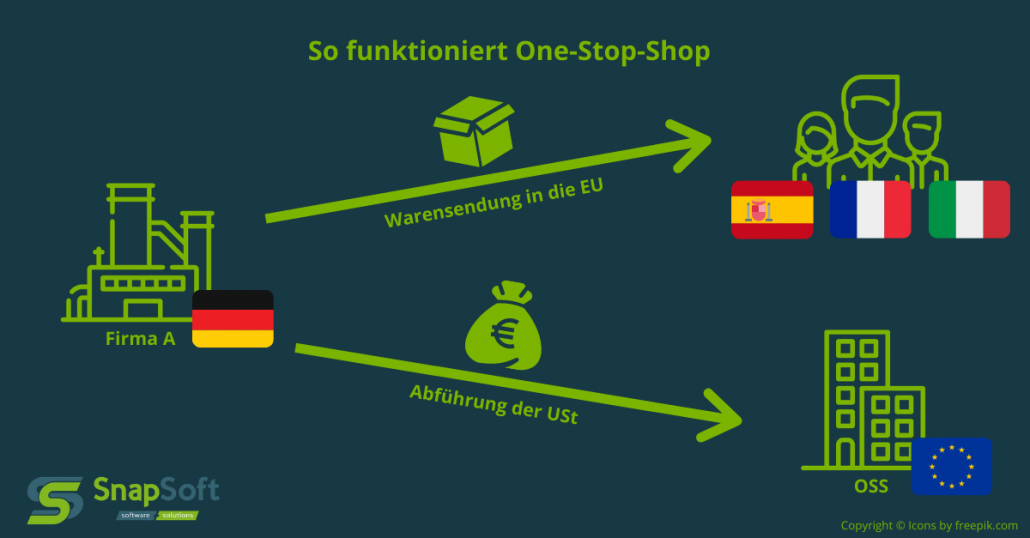
Note: OSS replaces an existing previous regulation, the mini one-stop shop (MOSS), with which digital services to private customers could be processed. MOSS will start on July 1st. fully integrated into OSS. Anyone who used the previous service is already automatically registered for the one-stop shop.
Tax period and service provision
With OSS, tax is always quarterly. The sales tax must be paid by the end of the month following the end of the quarter at the latest. That means:
- Quarter: Payment by April 30 at the latest
- Quarter: Payment by July 31 at the latest
- Quarter: Payment by October 31 at the latest
- Quarter: Payment by January 31 of the following year at the latest
The payments are to be made to the bank account of the BZSt.
Special regulation for companies with small and medium-sized sales
If a company does not exceed the delivery threshold of 10,000 euros, the turnover is considered to be domestic. This means that VAT only has to be paid in the country where the company is based. The local sales tax rate applies.
How can I participate in the OSS scheme?
If you want to use the one-stop shop, you have to register electronically with the BZSt portal, stating your VAT ID.
One-stop shop in practice: Good approach, not fully thought through
At its core, OSS is a very useful instrument that can simplify sales tax law for internationally active online retailers in the future. The key word here is “perspective”, because at the start one-stop shop will bring very few retailers any real benefit.
The sales tax reform stipulates that companies can only be based in one EU country, i.e. have no headquarters abroad. This also includes a central warehouse – and that is exactly what makes OSS outdated even before its appearance. The logistics of medium-sized and large online retailers have long since crossed national borders, because customers want to be able to offer customers the shortest possible delivery routes and times, even in the case of long-distance sales. And for FBA users, too, the logistics often take place abroad, because retailers from Germany store their FBA products in Poland and the Czech Republic, which now leads to VAT liabilities much faster, from a delivery threshold of 10,000 euros.
Amazon FBA users can use the so-called “Union One-Stop-Shop”, as the marketplace operator calls it, and pay their sales tax centrally. However, there is no way around registering with the tax office of the country of destination. One can only hope that the law will be readjusted in this regard.
Tip: It is possible for FBA users to insist on exclusive storage in Germany. We described how to do this in our post on calculating FBA costs .
What sales tax rate applies when? The problem is increasing!
In addition to the impractical legal framework, OSS also has to contend with the legacy of European sales tax law. Retailers are still faced with the question of how to include sales tax in their price calculations . With lowering of the delivery thresholds, this problem is exacerbated. At best, estimates and a look at past financial years can be used to determine how sales are distributed among the individual countries – if there is sufficient historical data at all, this is not the case for new products or newly internationalized companies. Highly fluctuating tax rates make pricing difficult even then.
Conclusion
With One-Stop-Shop, the EU wants to simplify sales tax law. Reforms are also urgently needed here, because trade on the internal market is unnecessarily complicated by a confused legal situation. However, the sales tax reform will not bring any relief for many retailers for the time being. On the contrary, with the lowering of the delivery thresholds, more companies will have to find their way to foreign tax authorities, since OSS brings with it impractical hurdles when it comes into force.
At least the European Union is creating an electronic platform for the central payment of sales tax. With a corresponding readjustment of the reform, it should then also be usable for the majority of retailers.
Optimize your Amazon business with SnapTrade
With SnapTrade’s automatic Amazon price optimization, you can increase your sales and increase your margin. The tool offers a variety of strategies for competitive price adjustment and/or winning the Amazon Buy Box.

